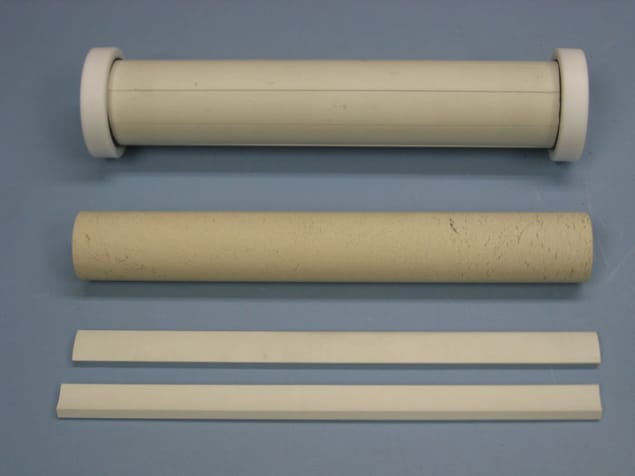
Physicists in the US claim to have created the first 3D invisibility cloak that can operate alone in free space. The cloak, based on a “plasmonic” shell, can hide a cigar-sized cylinder from microwaves – although it currently only operates for one microwave polarization.
Invisibility cloaks have been around since 2006, when a team led by David Smith at Duke University in North Carolina, US, produced a device that could guide microwaves of a very narrow frequency around an area a few centimetres in diameter. The device was based on a “metamaterial” comprising an array of resonators that altered the electrical permittivity and magnetic permeability throughout the cloak. Variations in these properties resulted in the microwaves bending round the hidden space like water around a stone, albeit only in 2D.
Since then, there has been a great deal of research into invisibility, with one goal being to develop a cloak that can hide a macroscopic object over the broad range of visible light frequencies and in 3D. Last year there was a big step towards this goal when Martin Wegener and colleagues at the Karlsruhe Institute of Technology in Germany developed the first 3D cloak, operating in the near-infrared. But this was a flat, “carpet” cloak, whereby the hidden object had to be placed on a surface, with the cloak itself laid on top. Ideally, a 3D cloak would allow an object to be positioned away from a surface, in free space.
Plasmonic cloaking
Now Andrea Alù and colleagues at the University of Texas at Austin claim to have made just such a cloak. Unlike previous metamaterial designs, the device is based on a plasmonic cloaking concept, in which the light scattered by an object is cancelled precisely by an exterior shell. Plasmonic materials have special properties at certain frequencies where the electromagnetic radiation can excite electron oscillations called plasmons. The shell works because it has a very low permittivity, providing it with a polarization opposite to that of the object. Any light scattering off the object is therefore cancelled out, and the object appears transparent.
Alù’s research group achieved this with a hollow dielectric cylinder 18 cm long and 2.5 cm in diameter constructed from eight segments. At a frequency of 3 GHz, the scattering of polarized microwaves was reduced by more than 9 dB for a 60° range of angles.
Martin Wegener thinks Alù’s group has indeed performed the first free-space demonstration, but he notes certain drawbacks. One is that the cloak can only hide a dielectric object, and not a metal object. Another is that the cloak only works for polarized microwave light, so an observer would “have to put polarizing goggles on to appreciate the cloaking”, he says.
Isotropic response required
Alù suggests there is a way to make a similar cloak for unpolarized light, however. “For ease of realization, we have picked a metamaterial design that is anisotropic, and therefore works only for one polarization,” he explains. “[But] one can, in principle, come up with other metamaterial designs, such as 3D wire media or isotropic arrays of inclusions, that would provide an isotropic response independent of the impinging polarization.”
Martin McCall, a theorist specializing in invisibility cloaks at Imperial College London, thinks the experiment is still a long way from the “dream” of a cloak that works in 3D over the broad range of visible light frequencies. “I would say this is an interesting development, but brings us only a small step closer,” he says.
The research is reported in the preprint arXiv:1107.3740.



